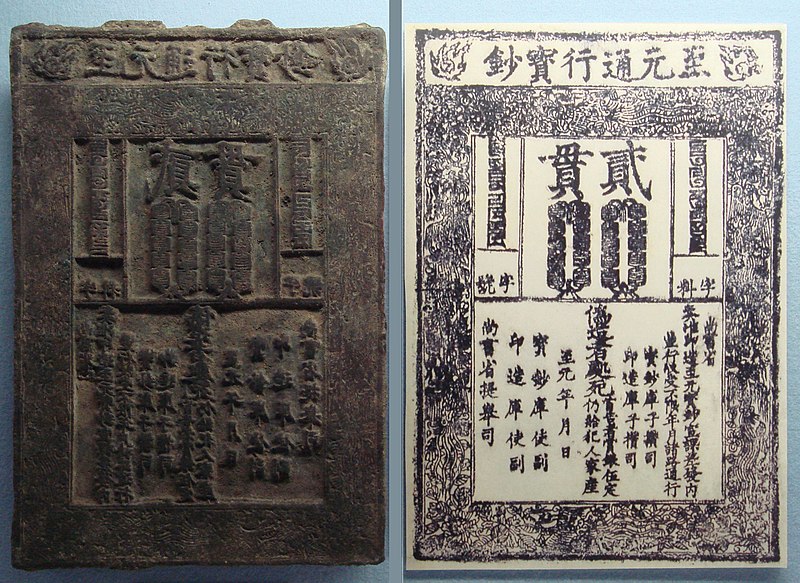A banknote (often known as a bill, paper money or simply a note) is a kind of negotiable instrument, a promissory note made by a bank payable to the bearer on demand, used as money, and in many jurisdictions is legal tender. In addition to coins, banknotes make up the cash or bearer forms of all modern fiat money. With the exception of non-circulating high-value or precious metal commemorative issues, coins are used for lower valued monetary units, while banknotes are used for higher values.
The banknote was first developed in China during the Tang and Song dynasties, starting in the 7th century. Its roots were in merchant receipts of deposit during the Tang Dynasty (618–907), as merchants and wholesalers desired to avoid the heavy bulk of copper coinage in large commercial transactions.[1][2][3] During the Yuan Dynasty, banknotes were adopted by the Mongol Empire. In Europe, the concept of banknotes was first introduced during the 14th century, with proper banknotes appearing in the 17th century.

A Yuan dynasty printing plate and banknote
In 1696, Bank of Scotland achieved something unique. It became the first commercial bank in Europe to successfully issue paper currency. After more than 300 years, it continues to do so. This makes its banknotes the longest continuous issue in the world. Where Bank of Scotland led, others followed. Since 1696, more than 80 different Scottish banks have placed their notes into circulation. Together they have played a vital role in Scotland's economic and commercial development.





No comments:
Post a Comment